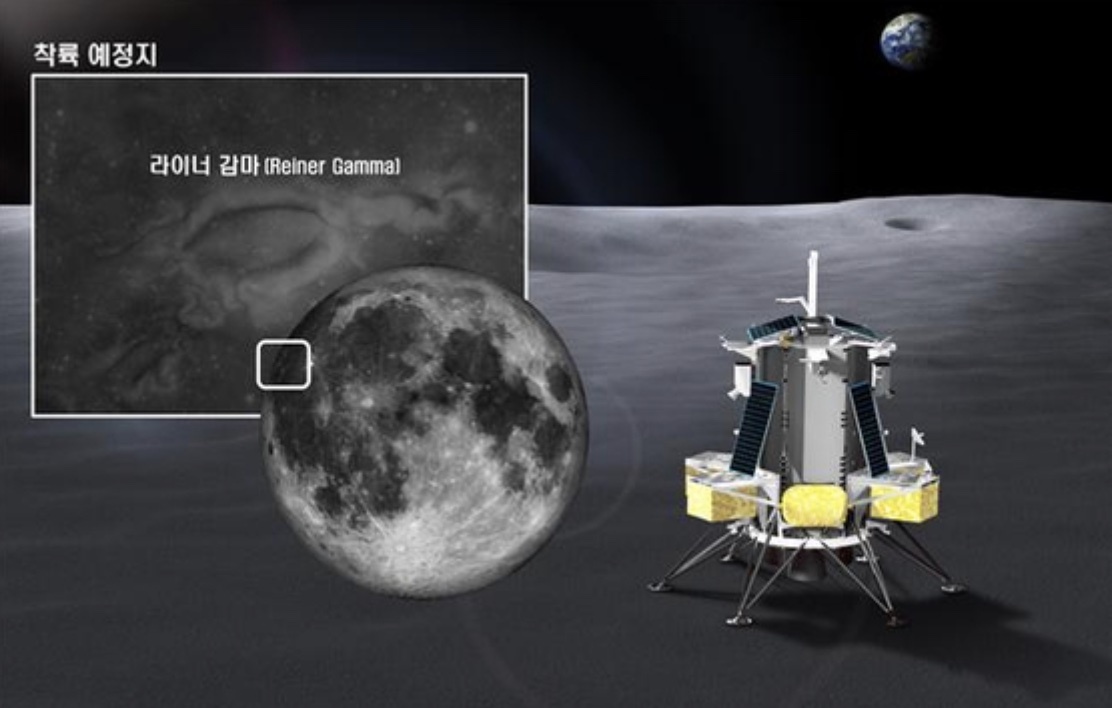5.09.2023

A computer-generated image of the Nova-C lunar lander, on which Korea's domestically-developed space payload Lunar Space Environment Monitor, or Lusem, will be loaded [MINISTRY OF SCIENCE AND ICT]
A domestically-developed space payload will be loaded onto a U.S. lunar lander slated for launch next year, Korea's Ministry of Science and ICT said Monday, as the country picks up its pace in the new space race.
Named the Lunar Space Environment Monitor (Lusem), the payload will embark on its mission atop the unmanned lunar lander Nova-C by Intuitive Machines, a Houston, Texas-based spacecraft developer, as part of a NASA-led Commercial Lunar Payload Services (CLPS) project.
The Nova-C will then be carried into space on SpaceX’s Falcon-9 sometime around the end of 2024, to land in the low-latitude Reiner Gamma region on the lunar nearside.
The 10-kilogram (22-pound) Lusem payload departed from the Korea Astronomy and Space Science Institute (KASI) headquarters in Daejeon on Monday for Houston, Texas. It will head to Incheon International Airport on a vehicle equipped with vibration-reducing features before being flown to the Intuitive Machines headquarters.
The Science Ministry said in a release that it will strive to further expand Korea's role in the U.S.-led Artemis program.
“We are very pleased to see that our first collaborative project since the signing of the Artemis Accords is moving forward successfully,” Cho Sun-hak, head of the Science Ministry’s space policy and nuclear energy bureau, said.
Korea signed the Artemis Accords, a U.S.-led international agreement for peaceful cooperation in the lunar exploration between member states of the Artemis program, in 2021. There are now 28 member countries.
The Artemis program aims to send humans, including the first woman and the first person of color, to the moon by 2025 and establish a lunar base by 2028. The United States plans to invest a total of $93 billion from 2012 through 2025 in the program, which aims to put the first humans on the moon since 1972.
The CLPS initiative, a NASA program under the Artemis plan, aims to develop a lunar economy with commercial space moon landing services. NASA spearheads the management and operation of the project, while a private company selected by the agency is carrying out the development and launch of an unmanned lunar lander.
The Lusem payload is a sensor that can detect high-energy particles above 50 kilo-electron volts, which could effect astronauts’ health and the performance of spacecraft electronics. High-energy particles also hold scientific significance for research on space weathering and more.
Lusem was developed by the KASI in collaboration with a research team led by Seon Jong-ho, a space engineering professor at Kyung Hee University, and manufactured by Satrec Initiative, a local satellite developer.
The KASI will develop and supply three more scientific payloads in addition to Lusem for NASA’s joint lunar missions under the CLPS project.
Quelle: Korea JoongAng Daily
